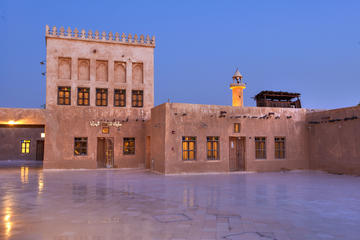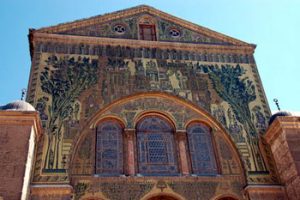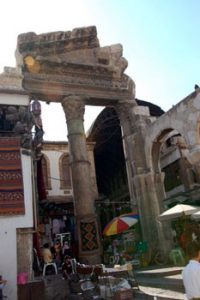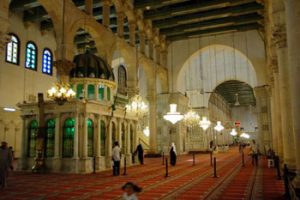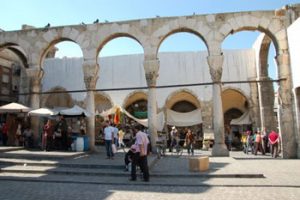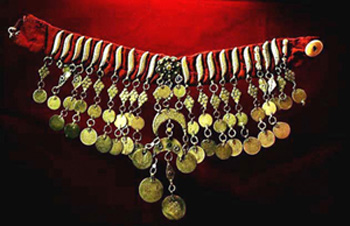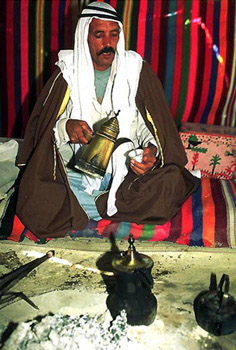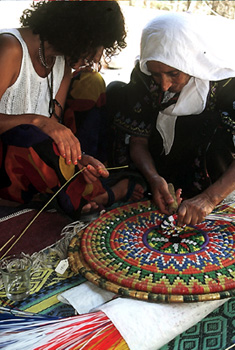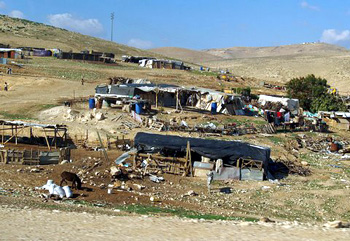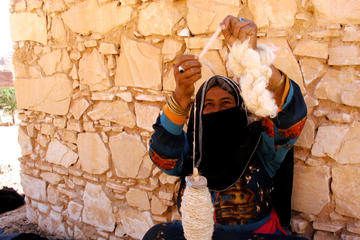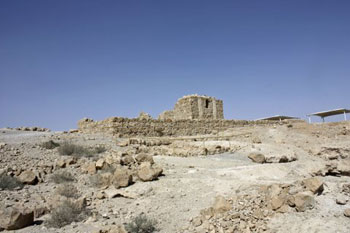
Israel: Qumran And Masada
by Troy Herrick
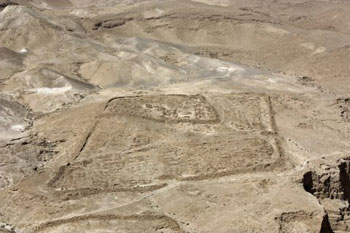 Straddling the shore of the Dead Sea, Highway 90 takes you through some of the most breathtaking desert scenery in the Middle East. You could be forgiven if you simply traveled southward and made an occasional stop to photograph the sandy brown cliffs and wadis (valleys) seemingly flowing into the salty water at the lowest place on earth. However en route, you also pass the unobtrusive sites of Qumran and Masada whose presence are only betrayed by signs denoting the park entrances. Neither site is visible from the road so if you are preoccupied with the scenery, you might miss them. And that would be a shame.
Straddling the shore of the Dead Sea, Highway 90 takes you through some of the most breathtaking desert scenery in the Middle East. You could be forgiven if you simply traveled southward and made an occasional stop to photograph the sandy brown cliffs and wadis (valleys) seemingly flowing into the salty water at the lowest place on earth. However en route, you also pass the unobtrusive sites of Qumran and Masada whose presence are only betrayed by signs denoting the park entrances. Neither site is visible from the road so if you are preoccupied with the scenery, you might miss them. And that would be a shame.
Qumran and Masada (approximately 50 kilometers east and 103 kilometers southeast of Jerusalem respectively) are both windows on the turbulent 1st century CE when the Roman Empire was in the process of quashing a major Jewish revolt. During this period, the temple in Jerusalem was destroyed and the Jews “headed for the hills” of Judea. You can enter their world by taking a day trip to Masada and Qumran from Jerusalem.
Masada
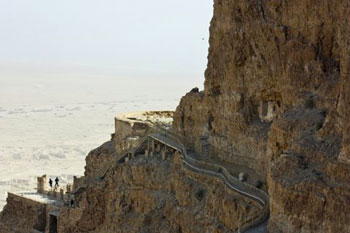 Masada has come to symbolize the tenacity of the modern state of Israel. Each year members of the Israel Defence Forces visit the ancient fortress and swear that “Masada shall not fall again”. But in 73 CE, Masada did fall after a prolonged siege. When the end came, 960 Jewish zealots chose death before slavery and committed mass suicide just hours before the Romans stormed the site.
Masada has come to symbolize the tenacity of the modern state of Israel. Each year members of the Israel Defence Forces visit the ancient fortress and swear that “Masada shall not fall again”. But in 73 CE, Masada did fall after a prolonged siege. When the end came, 960 Jewish zealots chose death before slavery and committed mass suicide just hours before the Romans stormed the site.
Almost a century before the siege, Herod the Great, fearing a revolt, fortified an isolated rocky plateau as a refuge for himself. At that time, the only means of reaching the summit was “the Snake Path”, named for its serpentine twists and turns. Modern day visitors have a choice of climbing 350 meters/700 steps or taking a cable car to the east side of the perimeter casemate wall of the fortress. Diane and I used the cable car to ride up to the site and then returned to the Visitor Centre later using the Snake Path.
Inside the fortress, Herod constructed two palaces – the Northern and Western Palaces. The Northern Palace was a luxurious and intimate residence; the Western Palace was the administrative and ceremonial center.
Set over three terraces, the Northern Palace is accessed by a set of stairs cut from the rock. The uppermost terrace served as the living quarters. The lowest two terraces were used for entertainment and relaxation. As you descend to the middle terrace, you pass cliff surfaces that still bear fragments of brightly painted frescoes. The lowest terrace features a small bath house and a series of six columns carved from the cliff and plastered over to resemble marble.
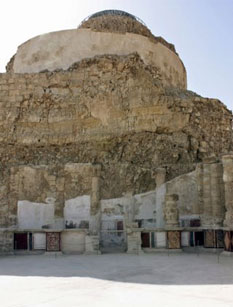 Return to the top of the stairs and walk along the western casemate wall to the appropriately named Western Palace – the largest structure on the plateau. Built around a central courtyard, this palace houses the throne room. The floor features the remnants of a mosaic with floral and geometric patterns.
Return to the top of the stairs and walk along the western casemate wall to the appropriately named Western Palace – the largest structure on the plateau. Built around a central courtyard, this palace houses the throne room. The floor features the remnants of a mosaic with floral and geometric patterns.
Peering over the casemate wall behind the Western Palace, you find a great earthen ramp rising from the valley floor. The besieging Roman constructed this ramp with slave labour and then rolled a 20-meter high siege tower with a battering ram up to the casemate wall. While the siege tower is long gone, you can still see the outlines of two of the eight Roman camps to the right of the ramp after almost 2000 years.
The Roman conquest of Masada wasn’t the end of the fortress however. Three centuries later, Byzantine monks occupied the abandoned site for almost two hundred years until they were displaced because of the Persian or Muslim conquest of the Holy Land. The ruins of a Byzantine Church, housing a number of colourful mosaics, serve to remind visitors of the last residents of this ancient fortress. With the departure of the monks, the site was left to the sun, the wind and the ravages of time; and it is now yours to discover.
Qumran
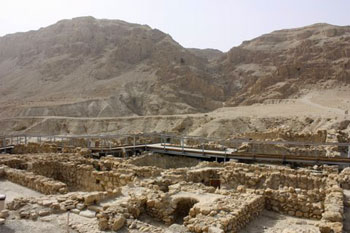 In 1947, a young Bedouin shepherd changed history when he threw a stone into a cave. Upon hearing the sound of shattered pottery, he climbed into the cave to investigate. Inside he discovered a number of earthenware jars containing 2000-year old parchment manuscripts. These documents, now known as the Dead Sea Scrolls, are some of the oldest Bible writings discovered to date. Eventually additional documents were also found in ten other caves, all of which are located near an isolated plateau holding the ancient village of Qumran.
In 1947, a young Bedouin shepherd changed history when he threw a stone into a cave. Upon hearing the sound of shattered pottery, he climbed into the cave to investigate. Inside he discovered a number of earthenware jars containing 2000-year old parchment manuscripts. These documents, now known as the Dead Sea Scrolls, are some of the oldest Bible writings discovered to date. Eventually additional documents were also found in ten other caves, all of which are located near an isolated plateau holding the ancient village of Qumran.
No scroll fragments have ever been found at the Qumran. However three inkwells and a number of oil lamps were discovered in the same room as a twelve foot long plastered desk top and mud brick benches. Clearly this “scriptorium” housed the some of the equipment required to copy the scrolls. An enigmatic Jewish sect known as the Essenes is credited with writing the Dead Sea Scrolls at Qumran.
 Constructed of rough, brown stones and mud/clay mortar, all buildings at Qumran reflect the ascetic and communal lifestyle of the 200 Essenes living there. Believing that they were living in “the end of days”, their lives were focused on strict adherence to religious laws that included ritual bathing, voluntary poverty and an abstinence from worldly pleasures including marriage. Every day residents bathed before prayer and the noon meal. Dressed in white veiled clothing, each person descended steps and submerged himself into the cold water of a ritual bath (miqva’ot). Scattered around the village, ten ritual baths testify to the Essenes’ preoccupation with purity and ritual bathing. Ritual purity was so important that most of the baths had a division along the plaster-covered steps to prevent contact between those ascending (the purified) and those descending (the impure).
Constructed of rough, brown stones and mud/clay mortar, all buildings at Qumran reflect the ascetic and communal lifestyle of the 200 Essenes living there. Believing that they were living in “the end of days”, their lives were focused on strict adherence to religious laws that included ritual bathing, voluntary poverty and an abstinence from worldly pleasures including marriage. Every day residents bathed before prayer and the noon meal. Dressed in white veiled clothing, each person descended steps and submerged himself into the cold water of a ritual bath (miqva’ot). Scattered around the village, ten ritual baths testify to the Essenes’ preoccupation with purity and ritual bathing. Ritual purity was so important that most of the baths had a division along the plaster-covered steps to prevent contact between those ascending (the purified) and those descending (the impure).
A cistern 9 meters deep and 4 meters in diameter, one of several such storage pools, hints at the volume of water required by this desert community. Seasonal flooding provided the run-off water to fill this cistern via a complicated aqueduct and channel system.
The Romans destroyed Qumran in 68 AD and dispersed the community. But before the end came, the Essenes managed to hide their treasured scriptures inside the eleven nearby caves. Cave 4, on the side of a cliff approximately 100 yards away from the ruins is clearly visible. The priceless documents hidden within were abandoned to the ages along with Qumran site. Now the ancient village is yours to explore.
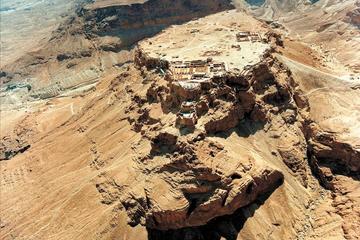
Private Day Trip of Masada and Dead Sea from Tel Aviv
If You Go:
To visit Masada and Qumran, take the Egged Bus from the Central Bus Station in Jerusalem. The more distant Masada should be your first destination. Stop at Qumran on your return trip to Jerusalem. Check the Egged Website for scheduled bus times.
Admission to Qumran costs 20 Shekels.
The cost of admission to Masada is determined by how you will travel to and from the summit. Using the Snake Path up and down costs 25 Shekels; a one-way a cable car ride costs 49 Shekels and a two-way cable car costs 67 Shekels.
Qumran and Masada are both National Parks. If your travels will bring you to six national parks in total (check the website for the list of national parks), you may wish to purchase a national park pass.
Qumran and Masada are both set in the desert where heat and dehydration are concerns. Learn more about how to prevent dehydration.
You can see copies of the Dead Sea Scrolls at the Israel Museum in Jerusalem. These are housed inside the Shrine of the Book. Admission to the Israel Museum is 48 Shekels. You can take local bus # 9, 17 or 24 outside the Central Bus Station to the Israel Museum.
About the author:
Troy Herrick, a freelance travel writer, has traveled extensively in North America, the Caribbean, Europe and parts of South America. His articles have appeared in Live Life Travel, International Living, Offbeat Travel and Travel Thru History Magazines. He also penned the travel planning e-book entitled ”Turn Your Dream Vacation into Reality: A Game Plan for Seeing the World the Way You Want to See It” – www.thebudgettravelstore.com/page/76972202 based on his own travel experiences over the years. Plan your vacation at his www.thebudgettravelstore.com and www.plan-a-dream-trip.com sites.
Photographs:
Al photographs are by Diane Gagnon. A freelance photographer, she has traveled extensively in North America, the Caribbean, Europe and parts of South America. Her photographs have accompanied Troy Herrick’s articles in Live Life Travel, Offbeat Travel and Travel Thru History Magazines.

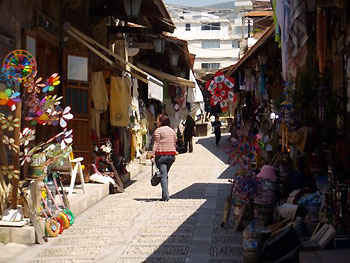
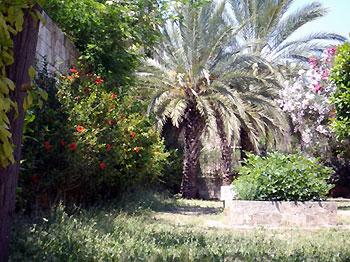 I have difficulties imagining what Neolithic people looked like, how they went about their business, how they built their houses, what they ate and how they made a living. Yet, they chose the picturesque location of Byblos although it’s not known what they called it at the time since Byblos is the Greek name and they came much, much later.
I have difficulties imagining what Neolithic people looked like, how they went about their business, how they built their houses, what they ate and how they made a living. Yet, they chose the picturesque location of Byblos although it’s not known what they called it at the time since Byblos is the Greek name and they came much, much later.
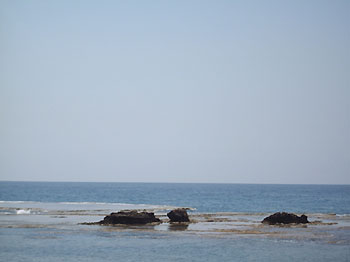 Even before that Byblos traded with Egypt and exchanged the famous cedar wood for papyrus, gold and other treasures of the Nile. In fact the word papyrus transformed into Byblos and into bible, all words for paper and for books. The Phoenician alphabetic script was invented here and most scripts today are still linear.
Even before that Byblos traded with Egypt and exchanged the famous cedar wood for papyrus, gold and other treasures of the Nile. In fact the word papyrus transformed into Byblos and into bible, all words for paper and for books. The Phoenician alphabetic script was invented here and most scripts today are still linear.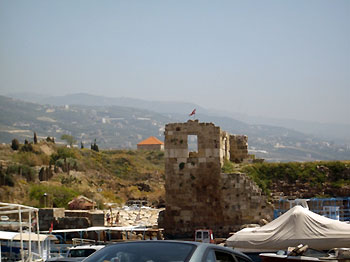 Climbing around the castle and walking along the city wall under the strong Mediterranean sun makes you dusty, hungry and thirsty, but in the blink of an eye, you can jump another 1000 years and rest your eyes and feet in one of the many outdoor fish restaurants or stylish bars and cafes which cater to the sophisticated taste of modern day visitors.
Climbing around the castle and walking along the city wall under the strong Mediterranean sun makes you dusty, hungry and thirsty, but in the blink of an eye, you can jump another 1000 years and rest your eyes and feet in one of the many outdoor fish restaurants or stylish bars and cafes which cater to the sophisticated taste of modern day visitors.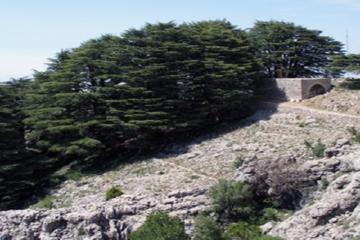
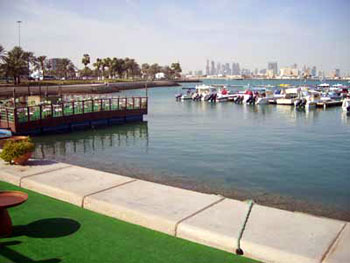

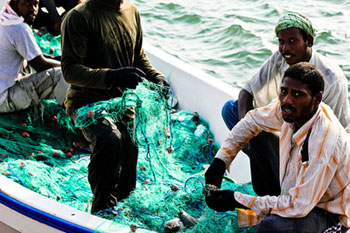 In its pre-oil days, Doha was a small, pearl fishing village. But since the 1930s, Qatar has become the richest country in the world per capita. And it has a side business of natural gas, which kick off soon.
In its pre-oil days, Doha was a small, pearl fishing village. But since the 1930s, Qatar has become the richest country in the world per capita. And it has a side business of natural gas, which kick off soon.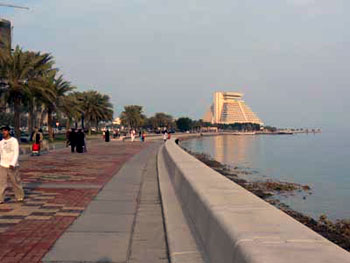 Doha city architecture and skyline is marvelous. Standing on the curve of A1 Corniche, the road that runs around the bay, is a host of fascinating building such as the pyramid-shaped Sheraton hotel, the bullet shaped Doha Office Tower, and the Lagoon Plaza tower, or the Zigzag towers as they are called here.
Doha city architecture and skyline is marvelous. Standing on the curve of A1 Corniche, the road that runs around the bay, is a host of fascinating building such as the pyramid-shaped Sheraton hotel, the bullet shaped Doha Office Tower, and the Lagoon Plaza tower, or the Zigzag towers as they are called here.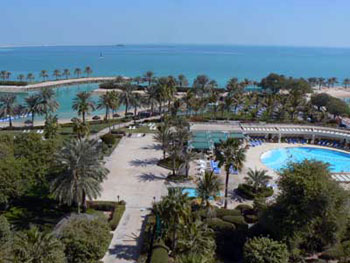 The highlight of my trip was a foray into the desert – a dune safari followed by a dinner in the Bedouin camp. Expect to be tossed around like a fly in jar by 4×4 drivers who are extremely proud of their driving skills – such as negotiate 70 degrees sand dunes. Dinner in the Bedouin camp afterwards was fun and memorable.
The highlight of my trip was a foray into the desert – a dune safari followed by a dinner in the Bedouin camp. Expect to be tossed around like a fly in jar by 4×4 drivers who are extremely proud of their driving skills – such as negotiate 70 degrees sand dunes. Dinner in the Bedouin camp afterwards was fun and memorable.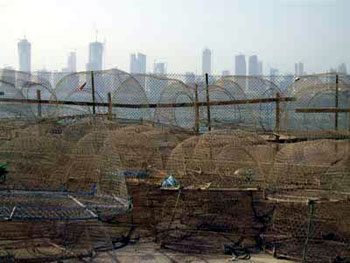 Later, a visit to the old city’s Salah al-Din street revealed the Assah Lebanese Traditional Village, where we had fresh langoustines and steak tartare, that awful raw mince dish, in traditional village setting. There were also some odd edible ensembles, such as a garden salad featuring whole peppers, tomatoes and hunk of cabbage on a cake tray. A delight, though, was the saj, small, sweet and puffy Lebanese bread served warm. There are also the usual fast food outlets and noodle bars that one expects to find in any big city.
Later, a visit to the old city’s Salah al-Din street revealed the Assah Lebanese Traditional Village, where we had fresh langoustines and steak tartare, that awful raw mince dish, in traditional village setting. There were also some odd edible ensembles, such as a garden salad featuring whole peppers, tomatoes and hunk of cabbage on a cake tray. A delight, though, was the saj, small, sweet and puffy Lebanese bread served warm. There are also the usual fast food outlets and noodle bars that one expects to find in any big city.